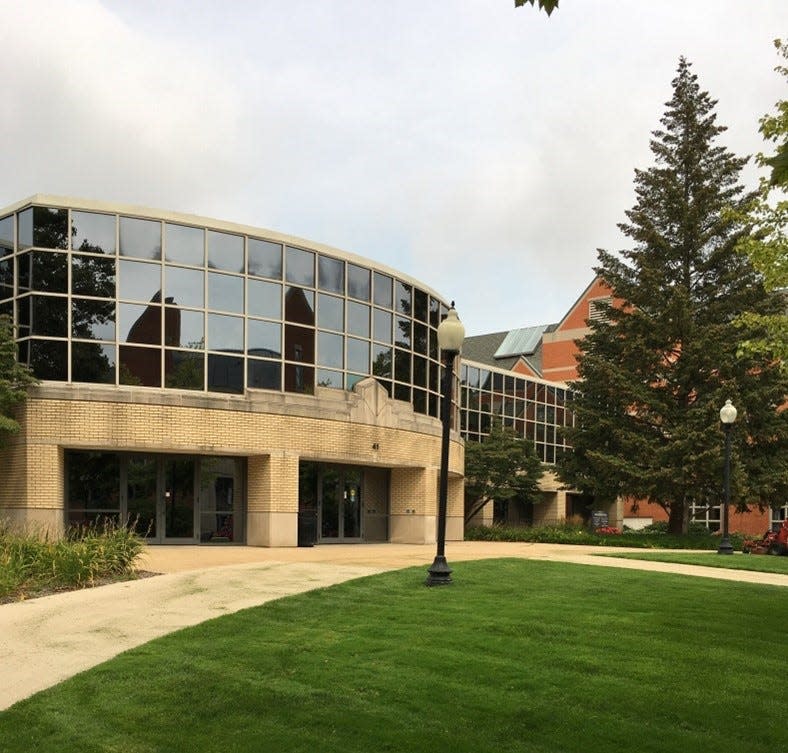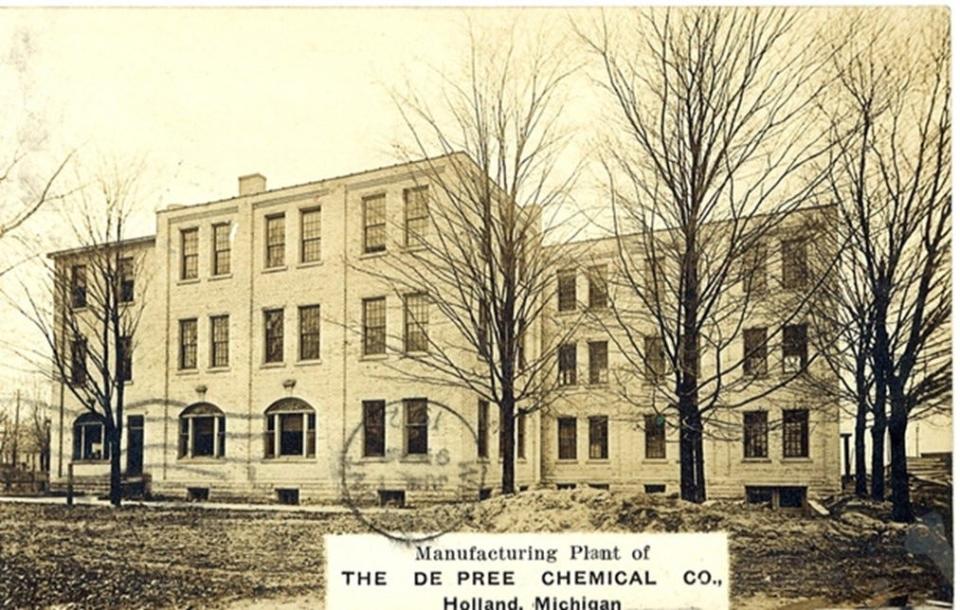Steve VanderVeen: Con DePree and DePree Chemical Company
Holland and Hope College owe chemists Con DePree and John Van Zoeren.
DePree was born in 1870. In 1906, working in Holland, he invented a fumigator that used formaldehyde. Then, he opened his own drug store on the corner of Central Avenue and Eighth Street.
More History: The legacy of Anthony and Henry DeKruif
More History: The final chapter of the DeBruyns
More History: Holland's first mayor excelled at management
In 1907, he launched the DePree Chemical Co. and built a three-story headquarters on Sixth Street and Central Avenue. There, he produced a deodorizing product under the brand name San-Tox.

By 1912, DePree employed 15 traveling salesmen who called on druggists. He also had a lab and sales office in Chicago, which his brother, James, ran. Prior to joining the company, James played football at the University of Michigan and coached baseball and basketball at the University of Tennessee.
In the 1920s, the DePree Chemical campus covered the entire Sixth Street block between River and Central Avenue, and included a complementary printing and paper box-making business.
With the help of P. Henry DePree, Edward DePree, Gerrit Diekema and Charles McLean, Con DePree formed DePree Laboratories. Among its chemists were James DePree, Andrew Hyma, and John Van Zoeren.
Initially, they did research on an antibody called arsphenamine, discovered during World War I to treat syphilis and other diseases. Later, James DePree developed a Vitamin B tablet made from wheat germ, which became a best seller under the brand name Wheatamin.
In 1923, Con DePree, Diekema and others served on the board of the Holland Maid Company, which made an electric washing machine. The company had much success initially, employing 200 men and running 50 trucks and 28 branch offices.

But the first machine proved to be poorly designed. So, in 1927, Holland Maid launched a new machine. But in 1929, at the onset of the Great Depression, the firm went out of business.
By 1933, the DePree Company was also broke. However, it re-emerged with Willis Diekema, Gerrit Diekema’s son, as president. One of its successful products was an insecticide called Vermi-Tox.
In the late 1930s, the DePree Company re-introduced San-Tox, later called Nurse Brand, a line of toiletries. In the 1950s, it introduced chlorophyll, a deodorant tablet, which got a big boost when Zeeland-native Paul DeKruif wrote an article about the drug in Readers Digest.
In 1977, the Chattem Drug Company bought the business. The DePree building at Central Avenue and Sixth Street still stands.
One of the DePree chemists was Gerrit John Van Zoeren. Born in Vriesland in 1884, he started attending Hope College in 1904, commuting on the Interurban, an electric railway that ran between Holland and Grand Rapids through Zeeland and Vriesland.
Zoeren graduated from Hope in 1912, then studied chemistry at the University of Illinois.
In 1914, he married Anna Elizabeth Lawton, a graduate of Teachers College in Kentucky. Back in Holland, John took a job at the Holland Sugar Company. Later, they moved to Montreal, where John studied and taught at McDonald College at McGill University, earning his master's degree in 1917.

During World War I, John served in the chemical warfare division, where he worked on explosives.
In 1919, Van Zoeren accepted a job with the Holland Aniline Company, a maker of dyes. In 1922, he joined DePree Laboratories. When the company went bankrupt in 1933, the Van Zoerens moved to Noblesville, Indiana, where John conducted research on embalming fluid.
In 1935, the Van Zoerens returned to Holland. After turning down an offer to teach at Hope College, John rented a lab at the DePree Company. Later, with the financial backing of Edward DePree, who was then working for Monsanto in St. Louis, Van Zoeren developed Carbromal, a mild sedative, for the Upjohn Company in Kalamazoo.
Then Van Zoeren, DePree and Dr. Lucas Kyrides launched Chemical Specialties Inc.
In 1940, the city of Zeeland enticed Chemical Specialties with 3.5 acres of land on N. Centennial Street, on the condition the business hit a certain payroll target, which it exceeded.
Subscribe: Learn more about our latest subscription offers!
In 1947, the partners sold their company to Miles Laboratories, which netted Van Zoeren over 10,000 shares of Miles stock.
In 1959, the Van Zoerens gave that stock — then worth $550,000 — to Hope College for a library. It was the bulk of their wealth.
Gerrit John Van Zoeren died in 1980.
Information for these stories comes from Robert Swierenga’s "Holland, Michigan," Hope College Digital Commons, The Zeeland Record, rpwrhs.org and Ancestry.com.
— Steve VanderVeen is a Holland resident and writes about local business history. Read about his book series at kickstarter.com/projects/holland-me/holland-and-me-the-series.
This article originally appeared on The Holland Sentinel: Holland History: The story of DePree Chemical Company

